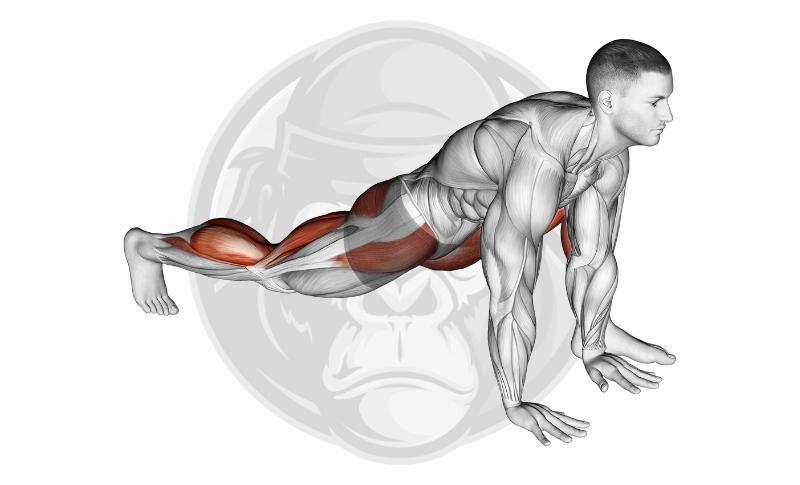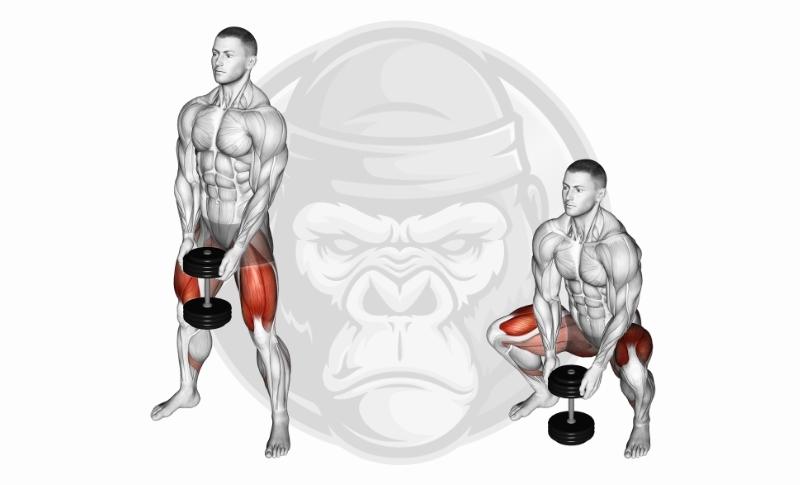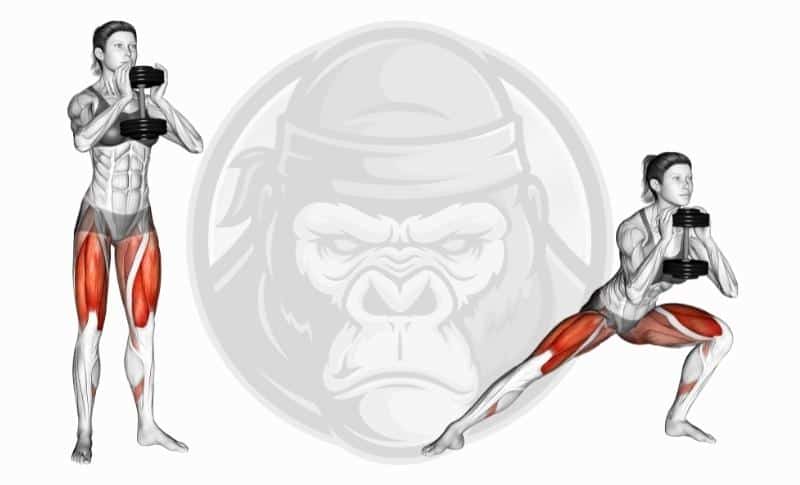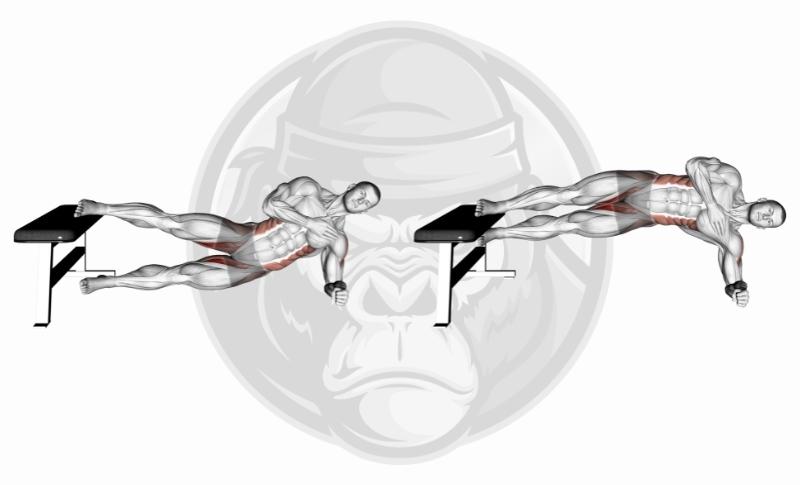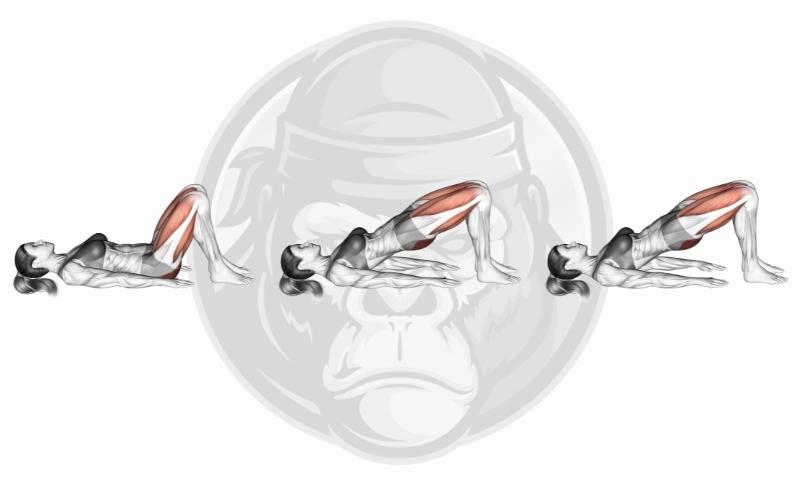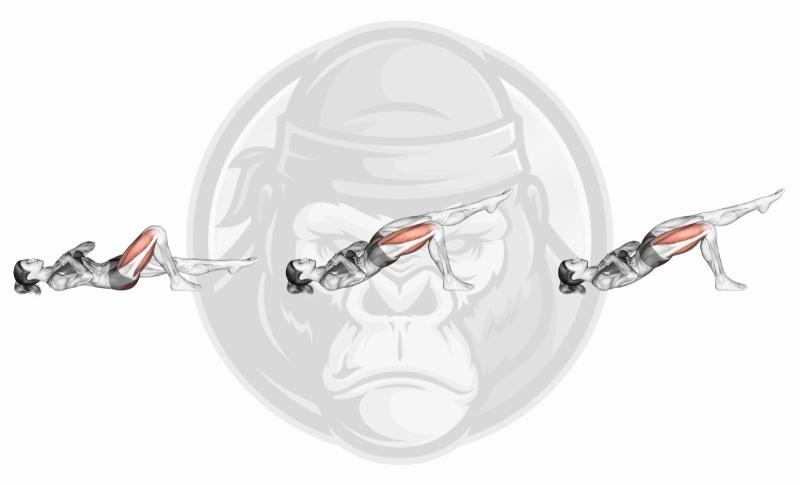Training
The 10 Best Hip Adductor Exercises
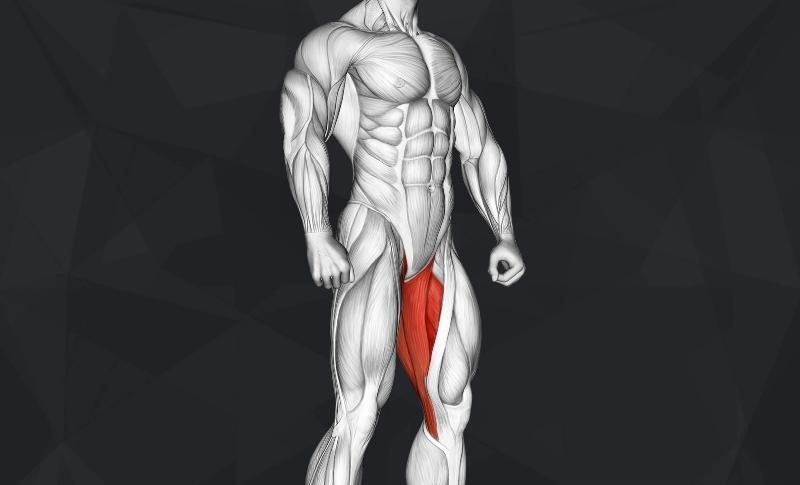
What are the best adductor exercises?
The best adductor exercises target the often-neglected inner thigh muscles that strongly impact the performance, strength, and mobility of the entire lower body.
To properly activate and work the hip adductors, it’s essential to understand which muscles these are and how to best exercise them in the gym.
The hip adductors are made up of five muscles: the adductor longus, adductor brevis, adductor magnus, gracilis, and pectineus.
These muscles work in conjunction to stabilize the body and help with moving the hips and legs.
Keep reading for the best exercises to work your adductor muscles.
The Best Hip Adductor Exercises
Our exercise lists are created by determining the best exercises for muscle growth, core strength, and overall health and well-being.
Here’s our list of the 10 best hip adductor exercises:
10. Clamshells
Great for:
A simple move to complete anywhere while stretching the hip adductor muscles.
How to do it:
- Lie on your left side with both knees bent
- Slowly open your right leg as far as it feels comfortable
- Hold for two seconds and slowly lower the leg back down
- Complete one set and then switch sides
- Repeat as desired
Why:
Looking for the best adductor exercise that doesn’t require any equipment? Meet the clamshell.
Clamshells are a great option to implement into any post-workout or warm-up to wake up the adductor muscles and your core.
Bonus — all you need is some space on the floor to get a great stretch in.
You can add a resistance band around your knees if you are looking for additional resistance, but that’s totally up to you and your fitness level.
When:
When your adductor muscles feel tight or weak, the clamshell movement is a good option.
It’s one of those hip adductor exercises you can do at home, in the gym, while traveling… really anywhere that has floor space.
9. Low Lunges
Great for:
Targeting the adductors, glutes, and legs.
How to do it:
- Get into the tabletop position on the floor and step your left foot forward with your ankle under your knee
- Extend the right knee back, resting on the ground, and feel the stretch in the right adductor
- Hold for 30 seconds to 1 minute, or any length that feels comfortable
- Switch legs and do the same on the left side
Why:
For a solid hip stretch, low lunges are sure to get the muscles activated and ready to work.
Focusing on your form and allowing your hips to extend fully helps prevent strain on the lower body muscles, particularly the adductor Magnus.
When:
You can do low lunges before a leg or butt workout or as a cool-down exercise after a heavy lift day that works the glutes and hamstrings.
Make sure to spend a solid amount of time on each hip adductor and get a good stretch in to prevent strain or soreness post-workout.
This is one of the hip adductor exercises we highly recommend for a solid stretch.
8. Loaded Groin Glides
Great for:
Hip adductor isolation and injury prevention.
How to do it:
- Kneel on the left knee and swivel your right leg out to the side, with your right foot pointing away from your body
- Your left knee should be in line with your right heel
- Holding dumbbells or weights out in front of you, engage your core
- Keep your back straight and lean to the right, stretching your left hip adductor
- Repeat as desired
Why:
To isolate the hip adductors and stretch your inner thighs, loaded groin glides are a solid choice to incorporate into your workouts or warm-ups, particularly for runners or heavyweight lifters.
Adding weight engages the core and works the arm muscles as well.
When:
Complete loaded groin glides to warm up the adductors and core before any full-body workout.
Finish two sets of 8 to 10 glides per leg, and begin to add weight or reps as you feel comfortable.
7. Sumo Squats
Great for:
Working the quads, glutes, hip adductors, and hamstrings.
How to do it:
- Make a wide stance with your feet, past hip-width distance apart
- Position your toes pointing out
- Bend at the knees and lower your hips into a squat while squeezing the glutes
- Don’t let your knees bend past your toes
- Drive through your heels to stand up slowly
- Repeat as desired
Why:
Sumo squats are a popular and effective option to target most of the major muscles in your core and lower body.
Sumo squats can also be made more difficult by adding weights or holding a dumbbell as you squat.
Adding weight works the muscles harder and allows for a deeper stretch in the adductors as you lower your body.
When:
Sumo squats can be completed during a leg or full-body workout. Start with 2 to 3 sets of 8 to 10 reps, and increase reps or weight as you gain strength.
6. Dumbell Side Lunges
Great for:
Building lower body strength, shaping the glutes and thighs.
How to do it:
- Grab a pair of dumbbells in the weight of your choice
- Stand with your feet hip-width apart
- Step your left foot out wide to the side, without bending your right knee
- Keep your right leg straight as you lunge down with your left leg
- Reverse the movement to stand back up
- Repeat as desired, then perform the same movement on your right leg
Why:
Working one leg at a time, side lunges are a unilateral exercise that can correct muscle imbalances that occur over time.
To improve hip stability and balance, this is one of the most effective hip adductor exercises.
When:
Adding dumbbell side lunges to any leg or circuit training workout is a great way to not only target those tricky hip adductors but also to get your heart rate up and the blood flowing.
5. Side-Leg Raises
Great for:
An efficient way to isolate and challenge the adductor muscles.
How to do it:
- Lie on the floor on your right side
- Lift your left leg in the air, keeping it as straight as possible
- Lower it slowly back down
- Repeat as desired
- Switch sides and do the same with your right leg
Why:
To work the glutes, legs, and hips, side-leg raises are a personal favorite of ours.
They’re great because any fitness level can perform this stretch without too much strain.
You’re using your own body weight in this movement, and you’ll know when it’s time to rest.
When:
To warm up the hip adductors, try doing two sets of 10 to 16 reps on each side.
If this is part of your leg day routine, add another set for more of a challenge.
4. Copenhagen Planks
Great for:
Building strength and balance in the hips while preventing strain in the adductors.
How to do it:
- Lie to the side of a bench, with your top foot resting on the bench
- Lift the hips up into a side plank
- Your bottom leg should be hovering underneath the bench
- Squeeze the legs together to engage the adductors
- Lower, then repeat as desired
Why:
Copenhagen planks are much more difficult than they seem — making them a great move to incorporate into your strength training circuits.
Strengthening the adductors is the best way to prevent strain and injury in the hips, legs, and lower back. All you need is a workout bench to make these happen!
When:
Incorporate Copenhagen squats into any moderate to heavy lift day to warm up the hips and legs muscles.
Try holding each side plank for 10 to 30 seconds and then switching sides.
3. Cossack Squats
Great for:
Training the adductors and the abductors individually.
How to do it:
- Plant your feet firmly on the ground, hip-width distance apart
- Shift your weight onto one leg, and slowly lunge down to one side
- Hinge your hips as you go, keeping your back straight
- Once you feel the stretch in your adductors, pause and return to the starting position
- Repeat as desired
Why:
For an exercise that trains the body to move in different directions, cossack squats are where it’s at. They require a full hip extension, a movement that the glutes help support.
Cossack lunges improve lateral movement and allow you to focus on one leg at a time, perfecting your form and getting the adductors a good stretch.
Because of the nature of the adductors, you don’t need to push your body too far with this movement. Once you feel the stretch in your inner thighs, switch legs.
When:
Cossack squats are a great move to perform as a circuit during leg day or even as a warm-up move to activate those inner thigh muscles before a heavy leg day lift.
2. Glute Bridges
Great for:
Maintaining a healthy pelvic positioning and activating the glutes.
How to do it:
- Place a foam roller between your legs and lie on your back
- Bend your knees and place your feet flat on the floor
- Squeeze the foam roller as you lift your hips off the ground
- Fully extend your hips, parallel to the ceiling, and hold for one second
- Lower and repeat
Why:
Glute bridges assist with alignment in your torso, core, and back. They also force the hips into extension, which activates the glutes and adductors.
When:
Start with this move as a part of your warm-up to any leg or lower body workout.
Complete two sets of 8 to 10 reps, and you can eventually move on to single-leg glute bridges as you get stronger and more comfortable with the movement.
1. Single-Leg Glute Bridges
Great for:
A low-impact move that targets the glutes and evens out muscle imbalances.
How to do it:
- Place a foam roller or medicine ball between your legs as you lie on your back
- Straighten one leg out in front of you and squeeze
- Lift your hips off the floor and move into a hip extension
- Engage your adductors to keep the foam roller in place between your legs
- Feel the stretch, and slowly lower back to the ground
- Repeat as desired
Why:
To properly isolate and work the glute, single-leg bridges can be done using a foam roller or medicine ball for support and balance.
This move mimics a true hip extension and simultaneously trains your adductor muscles while forcing your glutes to contract to support the movement.
When:
To maximize the stretch from this workout, try completing two sets of 8 to 10 reps before resting.
It’s best to do this after the heaviest part of your leg workout, so your glutes are already activated and ready to work.
FAQs About Adductor Exercises
To shed some light on the best adductor exercises you can do and their benefits, here are our answers to some frequently asked questions about adductor exercises.
Q: What are hip adduction exercises for?
Adductor exercises help to strengthen the hips and prevent injury in the legs.
Hip adductors help us to stand, walk, and rotate the legs.
If you have knee or back pain, hip adduction exercises can help to relieve that pain and help prevent injuries in the future by strengthening your legs and hips through hip extension stretches.
Q: Are adductor exercises important?
Adductor exercises are important for many reasons.
Strong adductors help keep the hips and knees balanced; they support alignment through your torso and core and help promote smooth movements through your back, hips, and legs.
Q: What causes weak adductors?
Typically, weak adductors are often a product of neglect.
If you aren’t training your hip adductors properly, those muscles can become weak from a lack of strength training and development.
Q: What happens if you have tight adductors?
Tight adductors can mean the muscles are underused and can lead to other injuries in the lower body.
Because the hip adductors help with balance in the knees, if you neglect these muscles, you run the risk of injury here and in other areas of the lower body.
To avoid injury, it’s important to stretch this sensitive area and warm up your legs for 5 to 10 minutes to ensure your muscles are ready to work.
Tight adductors can also prevent mobility in the hips and lower back.
Q: How do you relieve tight adductors?
There are some really helpful stretches and exercises that can help relieve tight adductors.
These include the single-leg glute bridge, cossack squats, and Copenhagen planks.
We recommend all of these exercises to prevent tight adductors and also as a way to stretch yours out if they’re feeling uncomfortable.
Summary
Because the hip adductors are a sensitive area of the lower body, stretching them consistently is essential to avoid injury and improve the balance and mobility of your body.
The best adductor exercises to stretch and strengthen your muscles are definitely on this list, and we highly recommend incorporating them into your daily stretching routine, as well as your heavier leg day workouts.
Sculpted and strong hip adductors, here you come!
Here’s a quick recap of the 10 best adductor exercises:
- Single-Leg Glute Bridges
- Glute Bridges
- Cossack Squats
- Copenhagen Planks
- Side-Leg Raises
- Dumbell Side Lunges
- Sumo Squats
- Loaded Groin Glides
- Low Lunges
- Clamshells


